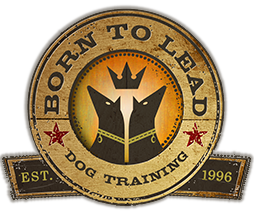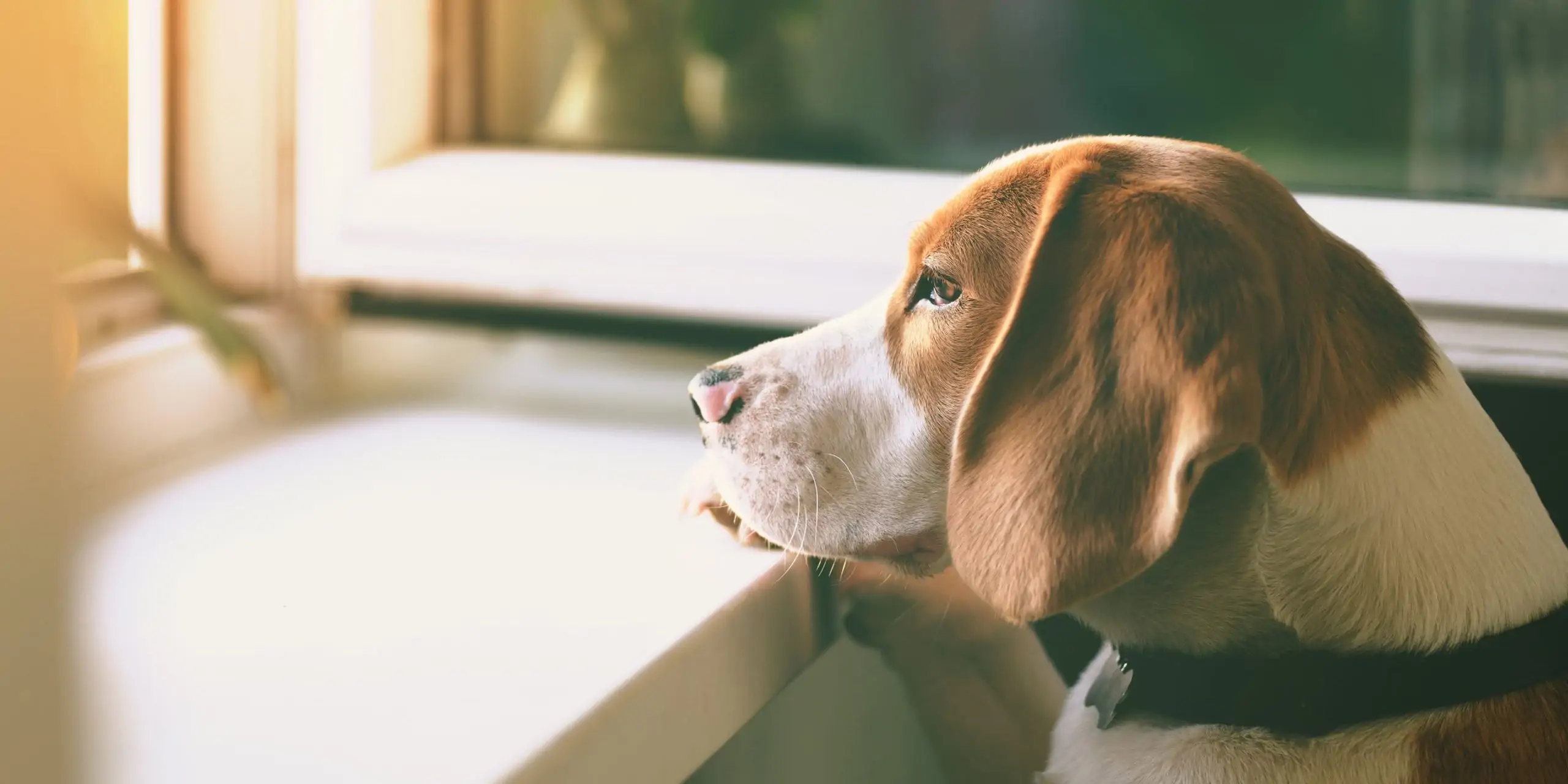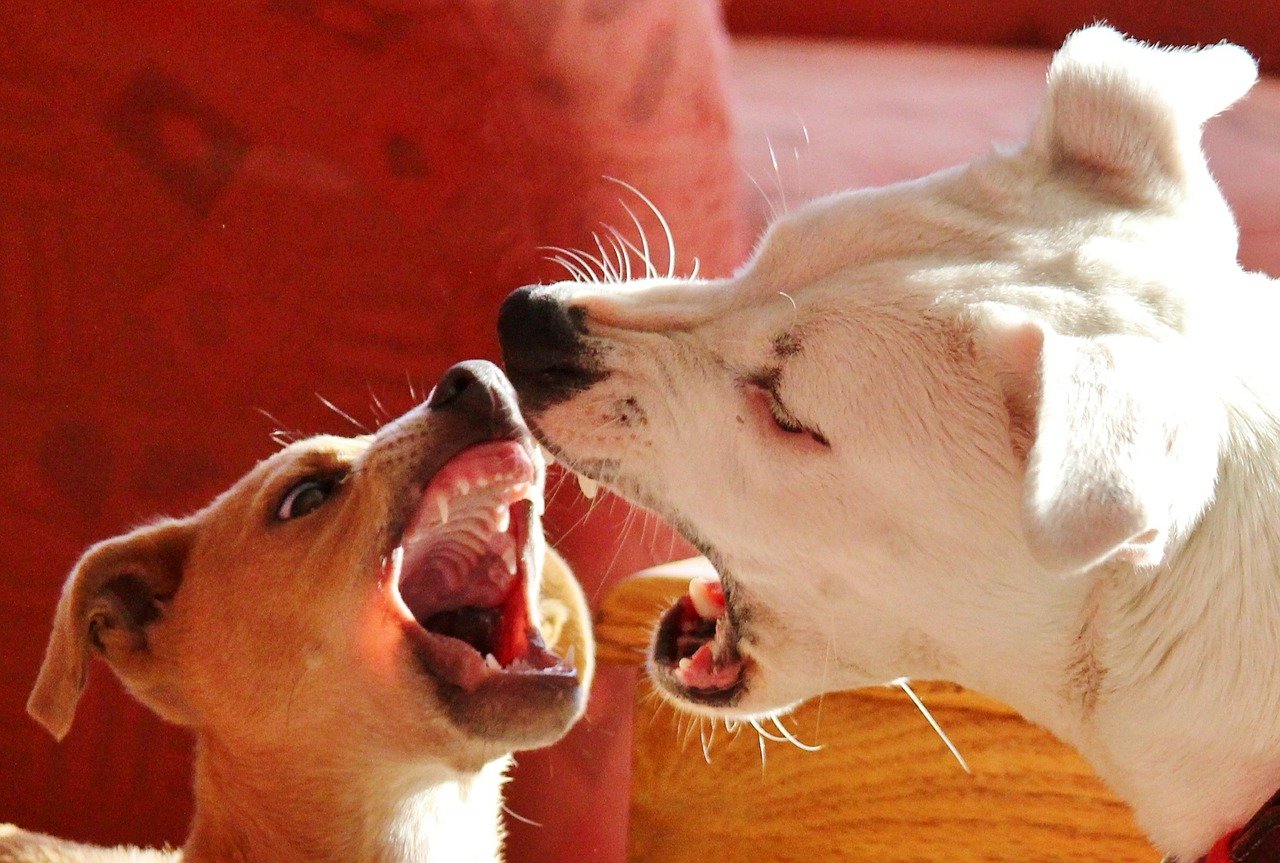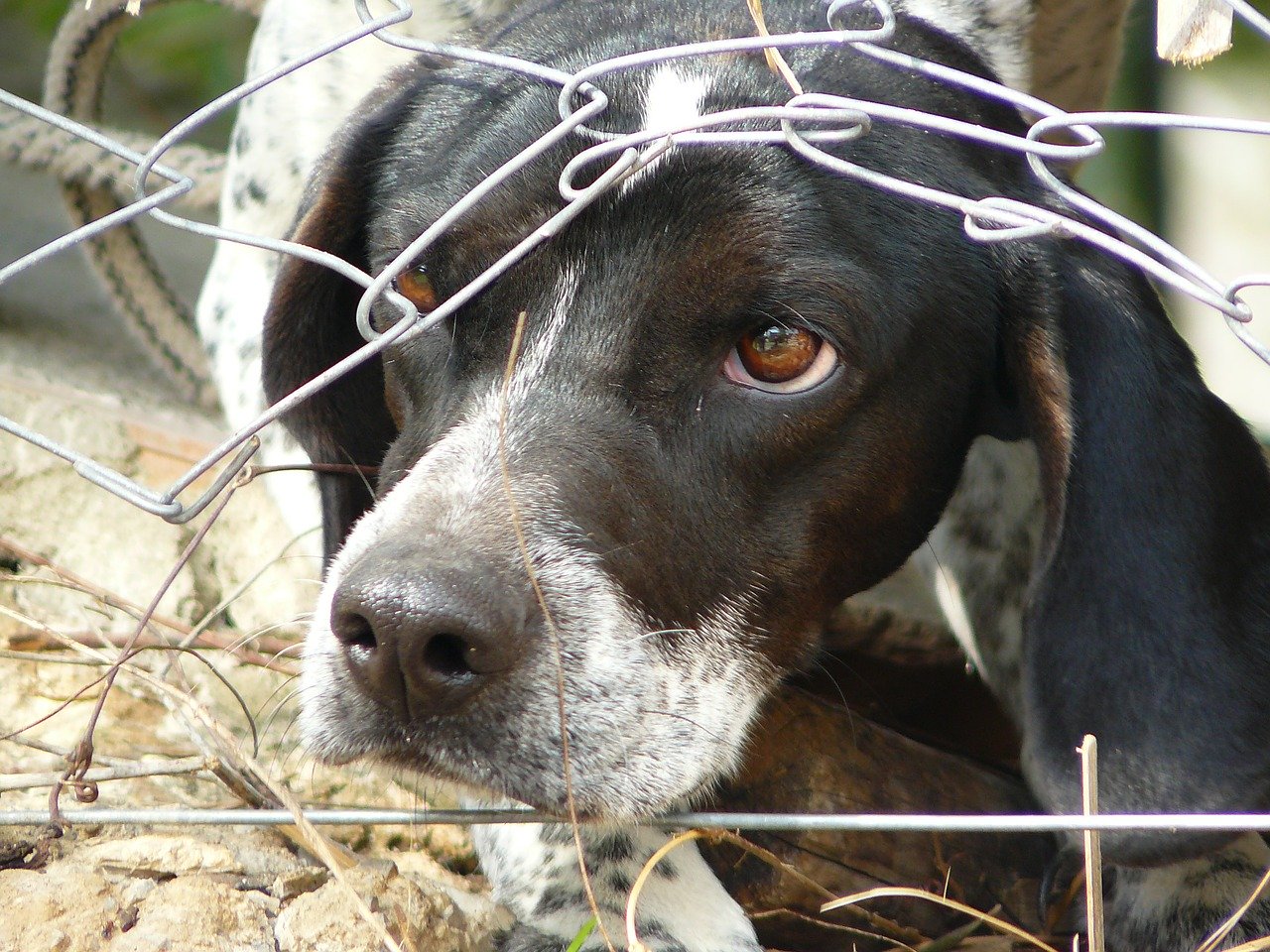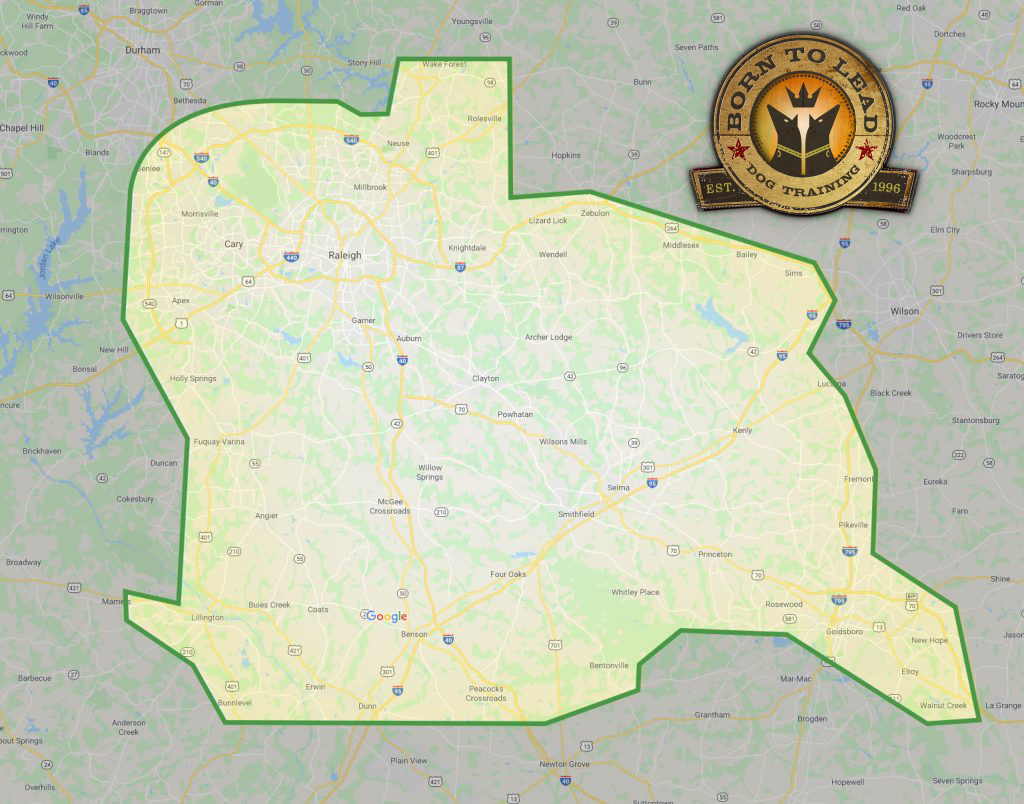Let me preface this whole thing by stating flatly: fear aggression is THE single worst behavior problem to deal with in a dog. It is also THE single hardest behavior problem to "correct". "Get thee to an expert" should be the response to almost all queries concerning fear aggression. That said, there is something to be learned in a generalized discussion concerning fear aggression.
Fear Aggression:
Fear aggression is not a simple behavior that can be easily diagnosed and treated. It is an entire spectrum of behaviors, ranging from a simple snap on a single occasion to Cujo, foaming at the mouth maniac. What produces fear aggression is a mixture of things; socialization, temperament, abuse, genetics, training, or just rotten luck. Like all behaviors, this is not a nature vs. nurture issue - it's a nature AND nurture issue. What is inevitably true however is that untreated, fear aggression only gets worse.
Fear aggression is exactly as it sounds - aggression produced as a result of fear. Not all scared dogs will get aggressive and not all dogs will get scared in similar circumstances. Knowing this gives us an insight into how to approach the problem behavior. One way is to ensure the dog won't get scared, no matter the circumstance. The other is to prevent the dog from becoming aggressive if it does get scared. Most people address the former but not the latter.
The former method is used with dogs that can be "turned around". Early socialization is a key ingredient to preventing fear aggression, as well as a proper breeding line of dogs. Fearful parents produce fearful pups. Boldness is inherited to some degree. By socializing your dog as much as possible, you are showing him not to become afraid, no matter the circumstances. This entails taking your young dog with you into lots of different environments and exposing him to lots of different people, dogs, noises, sights, etc. Familiarity produces calmness. The first time you jump out of an airplane at 5,000 feet, you're petrified. By the 500th time, it becomes blasé' and old hat. The first stranger your dog meets is going to be scary. The 500th won't be (if all the encounters have been positive). Setbacks to this include lack of exposure (if you only get to 3 strangers, then this isn't familiarity by any means), abuse (abused dogs learn to distrust people in general), or a bad encounter with a stranger (dogs have good memories and one bad encounter with a hair-pulling child can turn a dog off to kids for example).
Once the dog is a bit older, the method is the same but the approach is slightly different. Obviously, the more nice people your dog meets, the more he will begin to see strangers as nice folks. Quantity is very important here. Quality of encounter is also very important. All meetings with strangers should be as upbeat and positive as possible. Oftentimes, this means that the strangers engage in play or give treats to the dog. If your dog is a food mongrel, then a treat from a stranger will make all the difference in the world. If your dog is a Frisbee nut, then a few tosses from each person will help break the ice. After many weeks or months (depending on your dog) this slow desensitization may bring your dog around to appreciate and enjoy meeting strangers. Without the fear, there is no need for aggression and hence, the problem is solved.
However, with many dogs, this approach will not work. If the genetics of fear inherent in the dog is "strong", if the dog was abused badly enough, or the bad encounter was sufficiently terrible, then the dog may never trust strangers, no matter how much one tries to desensitize the dog. I equate this with a battered woman. Some women, depending on their circumstances, learn after a great deal of time, to trust men again. Some women, if the abuse was bad enough or they are less trusting in nature, will never trust men again. No amount of exposure to men will make them regain their trust (and maybe rightfully so). Some dogs are this way too.
For dogs that will never trust strangers again, we must analyze the behavior a bit. Why do fearful dogs become aggressive? (the second part of our approach) Fear in a dog (or person for that matter) produces some very strong instinctive responses. This "fight or flight" instinct is simply a coping mechanism to the fear-producing stimulus. If the dog sees a way out, flight is often the best manner in coping with its fear (not risking injury). This results in the dog running away, hiding behind its owner, or cowering in order to make itself look small. However, if the dog feels trapped like there's no way out, then it becomes the proverbial "dog backed into a corner" and feels it must fight its way out in order to survive. Feeling trapped does not mean that the dog is necessarily in a real physical corner. The trapped circumstance may be imagined but is nonetheless real for the dog. After one or two successful attempts at warding off the fear-producing stranger (most strangers go away when a dog rushes them), it becomes a habit and the dog learns that this coping mechanism is perfectly safe and effective.
The key to breaking this habit is twofold. The first is to prevent the dog from becoming as fearful as it would naturally, on its own. The second is to prevent the dog from receiving positive rewards when it utilizes this approach. Let's look at them separately.
In the first aspect, this is where most dog owners go wrong, though through no fault of their own. The idea is to display confidence and strength to the dog upon the approach of a stranger, quelling the fear within the dog. However, this almost never happens. And it's easy to understand why. If you own a fear-aggressive dog, you become worried that the dog will bite someone. When a stranger approaches, you tense up, fearing the worst. You don't want to be sued, you don't want to see the person hurt, and you're worried about the consequences for your dog. You tighten your grip on the leash. You may cross to the other side of the street. You may pull back on the leash, anticipating the inevitable lunge. I know people that walk their dogs at 2 AM just to avoid seeing strangers in their travels. In some neighborhoods, there are whole squads of these folks out walking their dogs in the pitch-black - risking encounters with others of their guild.
While this is going on, your dog is looking back to you to determine how to react to the approach of the stranger. When it sees you tense up, it senses the fear in you (though you are fearful of something else) and responds by becoming even more scared, and hence, even more aggressive. The dog becomes more aggressive, resulting in the owner becoming more worried about the aggression and tensing up further in the next encounter. This spirals downward until the dog and the owner are incapable of dealing with it. This is very natural to react this way, but very counterproductive. The solution to this is not easy. One must gain trust and strength in the fact that their dog won't become aggressive and everything will be all right. It then spirals upward, as the dog becomes less aggressive and the owner becomes more confident. Very easy to say - almost impossible to accomplish on your own. This is where a behavior professional becomes indispensable. You need help to become confident, as it is rarely accomplished alone - simply by deciding that you will be confident from now on.What about the dog that doesn't respond to this method? This is where the "getting in his face" becomes useful. Far too many dogs are allowed to get away with aggression and with the positive reward of the stranger going away, it becomes a self-perpetuating behavior. The WORST thing to do with a dog that becomes aggressive with a stranger is to remove them from the encounter (though this is only natural to do). The dog soon learns that this coping mechanism actually works. He gets scared, he shows aggression, and the stranger goes away (or he gets pulled away from the encounter). It's the same reason that dogs bark at the mailman - mailman comes, dog barks to scare them away, mailman goes away, dog learns that barking causes the mailman to go away, so dog always barks at the approach of the mailman.) The positive reward of being removed from the situation should be stopped.
Secondarily, the dog can be controlled through the use of dominance (note that this is not necessarily the same as meeting aggression with aggression). Dominant dogs determine how a pack is to react to an approaching stranger. If the alpha dog says everything is OK with this individual, then it is not up to a subordinate member to start a fight with them. Alpha dogs determine who to fight and when to fight. The alpha dog does not tolerate any form of unwanted aggression. This is how the worst cases of fear aggression are controlled. It relies on two things - that the alpha member is present and that the alpha leader is in control of subordinates. If you are not the alpha leader of the pack and your dog is, then you will have no way to control your dog's reaction. If you don't know whether you are boss or not, you need to take the dominance test. This is where "getting in the dog's face" becomes dangerous because if you're not truly the one in charge, you can get bitten yourself. All of this should be undertaken with the assistance of an expert.
If you are the alpha, then you must control how the dog reacts to strangers. All forms of aggression are met with stern warnings, growling reproaches, or physical means if necessary. In this case, you are meeting aggression with dominance (which may itself include aggression). The fear is still there in the dog but it knows that this coping mechanism is unacceptable. Giving the dog another coping mechanism is often very helpful in resolving the tension. Again, you need to determine the best coping mechanism with the assistance of a professional.
In the end, you still have a fear aggressive dog, but it is controllable. As long as you are present, the dog looks to you to see how to react and behaves accordingly. Leave them alone in the yard and they're going to tear apart anyone that enters. Not a bad thing to have but still dangerous in today's world nonetheless.
Fear aggression is not something to be taken lightly, nor is treatment to be entered haphazardly. I'd venture to say that more dogs are put down by their owners in this country for fear of aggression than old age. (This is only a personal opinion). Stop it early and get help.
Dog Training
